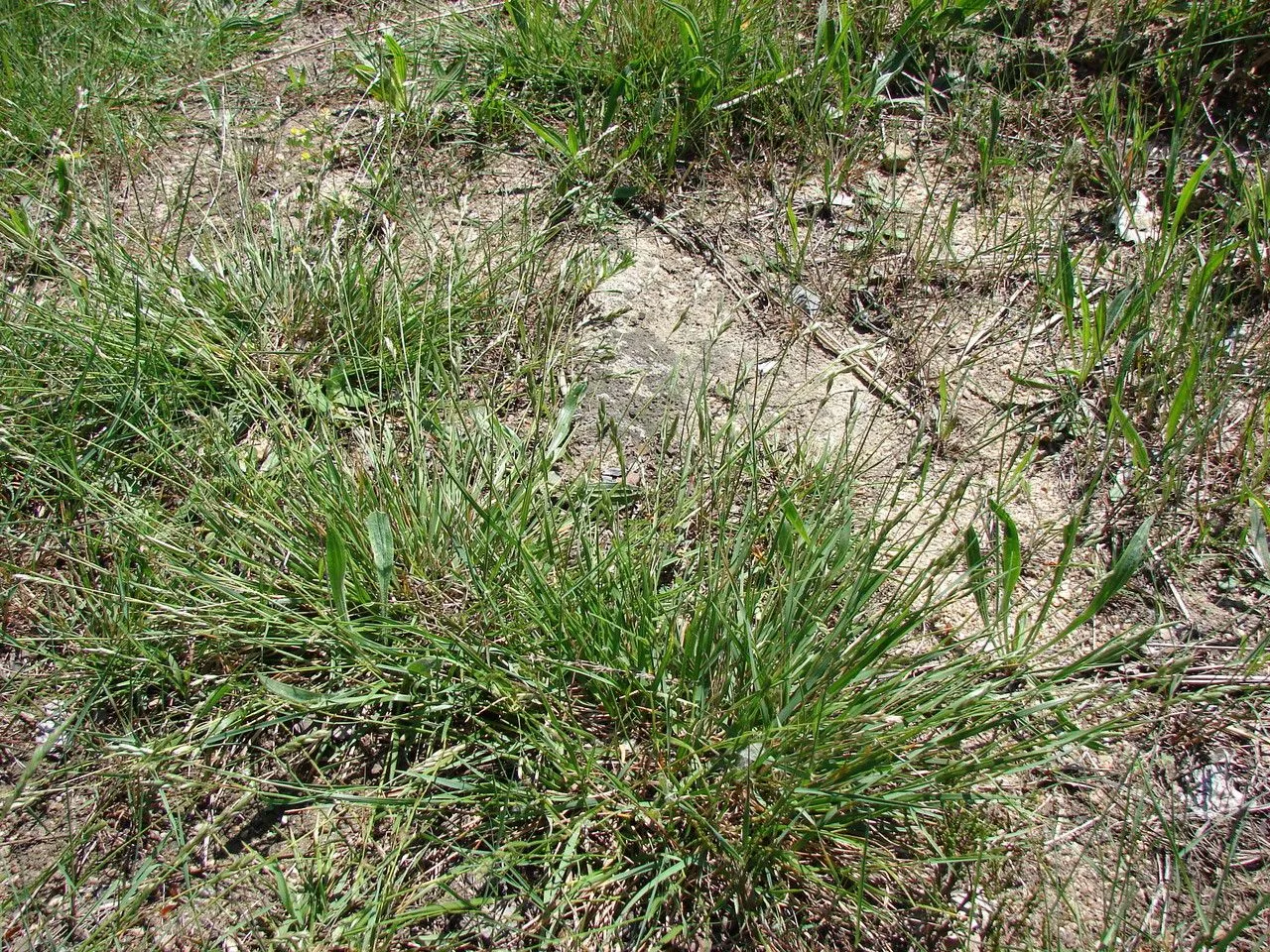
Author: (L.) DC.
Bibliography: J.B.A.M.de Lamarck & A.P.de Candolle, Fl. Franç., ed. 3, 3: 33 (1805)
Year: 1805
Status: accepted
Rank: species
Genus: Danthonia
Vegetable: False
Observations: Macaronesia, Europe, Medit. to Caucasus
Heath grass, scientifically known as Danthonia decumbens, is a perennial species of grass belonging to the Poaceae family. This grass is noted for its adaptability to a variety of habitats across different regions. It primarily thrives in areas ranging from Macaronesia and Europe to the Mediterranean basin and extending towards the Caucasus.
First described in the early 19th century by renowned botanists Jean-Baptiste Antoine Pierre de Lamarck and Alphonse de Candolle in the third edition of “Flore Française” published in 1805, Heath grass has since been recognized for its unique ability to flourish in both managed and natural environments. It typically forms compact tufts that can withstand lower levels of fertility and moisture, making it an ideal species for a range of soil types, including acidic and nutrient-poor soils.
Heath grass is characterized by its lush green foliage, which grows decumbently (spreading along the ground with tips turning upward). The plant produces distinctive spikelets containing several florets, contributing to its overall aesthetic and ecological value. Ecologically, Danthonia decumbens plays a crucial role in supporting biodiversity. It provides habitat and food for various insects and small animals, and its deep root system aids in soil stabilization and prevention of erosion.
Moreover, Heath grass is often favored in traditional and conservation-focused grassland management due to its resilience and low maintenance requirements. It is frequently used in restoration projects aimed at re-establishing native grassland ecosystems that support a wide array of flora and fauna.
In summary, Heath grass (Danthonia decumbens) is a versatile and ecologically significant species that enhances the diversity and stability of grassland habitats across its range from Macaronesia to the Caucasus region. Its enduring presence in botanical literature and consistent referencing by experts underscores its value to both natural landscapes and agricultural settings alike.
Dan: almindelig tandbælg, tandbælg
Eng: common heathgrass, heath grass, heather grass, mountain heath grass, heath-grass, mountain heathgrass, heathergrass
Deu: dreizahn
Nor: lægd-svingel
Fra: sieglingie décombante, danthonie décombante
Nld: tandjesgras
Sme: buolvasuoidni
Swe: knägräs, axsvingel
Cym: glaswellt y rhos, grugwellt, gweunwellt gorweiddiog, gweunwellt gorwreiddiog
En: Heath grass, Heather grass, Mountain heath grass, Common heathgrass, Heath-grass, Common Heath Grass, Mountain heathgrass, Heathergrass
Ar: دنطوان مفترش
Be: Зіглінгія ляжачая
Ca: Dantònia
Cs: Trojzubec poléhavý
Da: Almindelig tandbælg, Tandbælg
Nl: Tandjesgras
Et: Harilik kastekaer
Fi: Hina
Fr: Danthonie retombante, Sieglingie décombante, Danthonie décombante, Danthonie inclinée, Sieglingie retombante, Danthonie
De: Dreizahn, Dreizahn-Gras, Dreizahngras, Liegender Dreizahn, Liegendes Dreizahngras, Niederliegender Dreizahn, Niederliegendes Dreizahngras, Brachgras
It: Danthonia minore
Se: Buolvasuoidni
No: Lægd-svingel
Pl: Izgrzyca przyziemna
Sr: Trozupka
Sv: Knägräs, Axsvingel
Cy: Glaswellt y rhos, Grugwellt, Gweunwellt Gorweiddiog, Gweunwellt Gorwreiddiog
Taken Jul 14, 2012 by Tela Botanica − Emmanuel STRATMAINS (cc-by-sa)
Taken Jan 1, 1900 by EOL − Encyclopedia of Life (cc-by-nc)
Taken Jan 1, 1900 by EOL − Encyclopedia of Life (cc-by-nc)
Taken May 11, 2011 by Tela Botanica − Mathieu MENAND (cc-by-sa)
Taken Jul 14, 2011 by Tela Botanica − Bertrand BUI (cc-by-sa)
Taken Jun 23, 2020 by Emmanuel Cosson (cc-by-sa)
Taken May 23, 2019 by Antonio (cc-by-sa)
Taken Jul 11, 2020 by blueplatypus (cc-by-sa)
Taken May 27, 2022 by Georg Wasylow (cc-by-sa)
Taken May 27, 2022 by Georg Wasylow (cc-by-sa)
© copyright of the Board of Trustees of the Royal Botanic Gardens, Kew.
© copyright of the Board of Trustees of the Royal Botanic Gardens, Kew.
Taken May 16, 2015 by Tela Botanica − Paul FABRE (cc-by-sa)
Taken May 23, 2006 by Tela Botanica − Julien BARATAUD (cc-by-sa)
Taken Jun 10, 2013 by Tela Botanica − Liliane Roubaudi (cc-by-sa)
Taken Jan 1, 1900 by EOL − Encyclopedia of Life (cc-by-nc)
Taken Jan 1, 1900 by EOL − Encyclopedia of Life (cc-by-nc)
Taken Jan 1, 1900 by EOL − Encyclopedia of Life (cc-by-nc)
Taken May 26, 2006 by Tela Botanica − Julien BARATAUD (cc-by-sa)
Taken Jul 1, 2010 by Tela Botanica − Mathieu MENAND (cc-by-sa)
Taken Jun 17, 2008 by Tela Botanica − rembrandt (cc-by-sa)
Taken Jul 27, 2010 by Tela Botanica − Mathieu MENAND (cc-by-sa)
Taken Jan 6, 2016 by EOL − Pat Enright (cc-by-nc)
Taken Jul 11, 2013 by Tela Botanica − Liliane Roubaudi (cc-by-sa)
Taken Jan 1, 1900 by EOL − Encyclopedia of Life (cc-by-nc-sa)
Taken Jul 14, 2011 by Tela Botanica − Bertrand BUI (cc-by-sa)
Taken May 16, 2015 by Tela Botanica − Paul FABRE (cc-by-sa)
Taken Aug 15, 2002 by Photoflora – Benoit BOCK (©)
Taken Aug 15, 2010 by Photoflora – Benoit BOCK (©)
Taken Jan 1, 1800 by Tela Botanica − Daniel MATHIEU (cc-by-sa)
Taken Jan 1, 1970 by Photoflora – L’Abbé COSTE (©)
Taken Dec 31, 1849 by Tela Botanica − Herbier PONTARLIER-MARICHAL (cc-by-sa)
Growth habit: Graminoid
Ph maximum: 5.0
Ph minimum: 4.5
Light: 7
Atmospheric humidity: 4
Soil nutriments: 2
Family: Myrtaceae Author: (F.Muell.) K.D.Hill & L.A.S.Johnson Bibliography: Telopea 6: 402 (1995) Year: 1995 Status:…
Family: Rubiaceae Author: Pierre ex A.Froehner Bibliography: Notizbl. Bot. Gart. Berlin-Dahlem 1: 237 (1897) Year:…
Family: Sapindaceae Author: Koidz. Bibliography: J. Coll. Sci. Imp. Univ. Tokyo 32(1): 38 (1911) Year:…
Family: Asteraceae Author: A.Gray Bibliography: Pacif. Railr. Rep.: 107 (1857) Year: 1857 Status: accepted Rank:…
Family: Fabaceae Author: Medik. Bibliography: Vorles. Churpfälz. Phys.-Ökon. Ges. 2: 398 (1787) Year: 1787 Status:…
Family: Aspleniaceae Author: (Cav.) Alston Bibliography: Bull. Misc. Inform. Kew 1932: 309 (1932) Year: 1932…